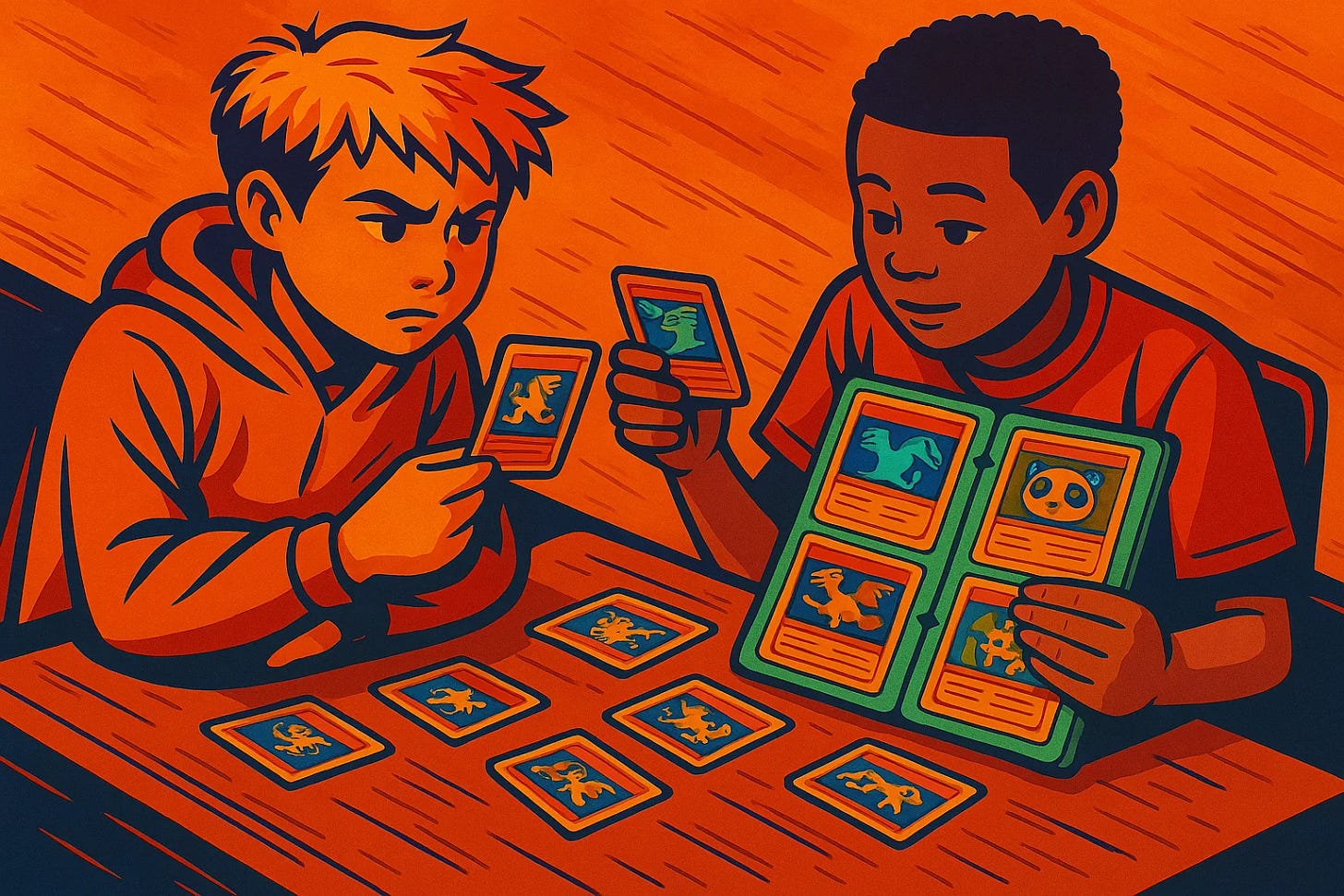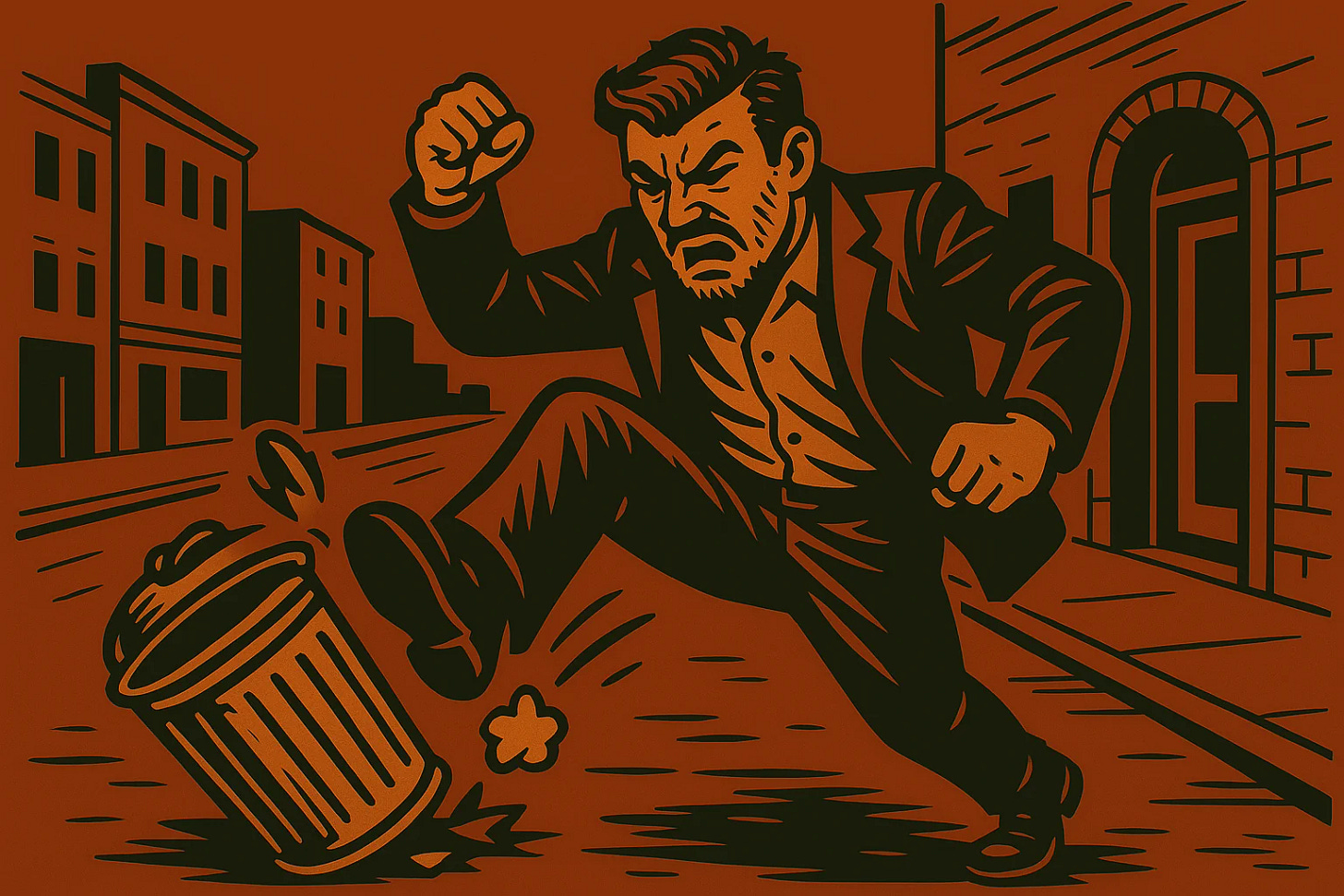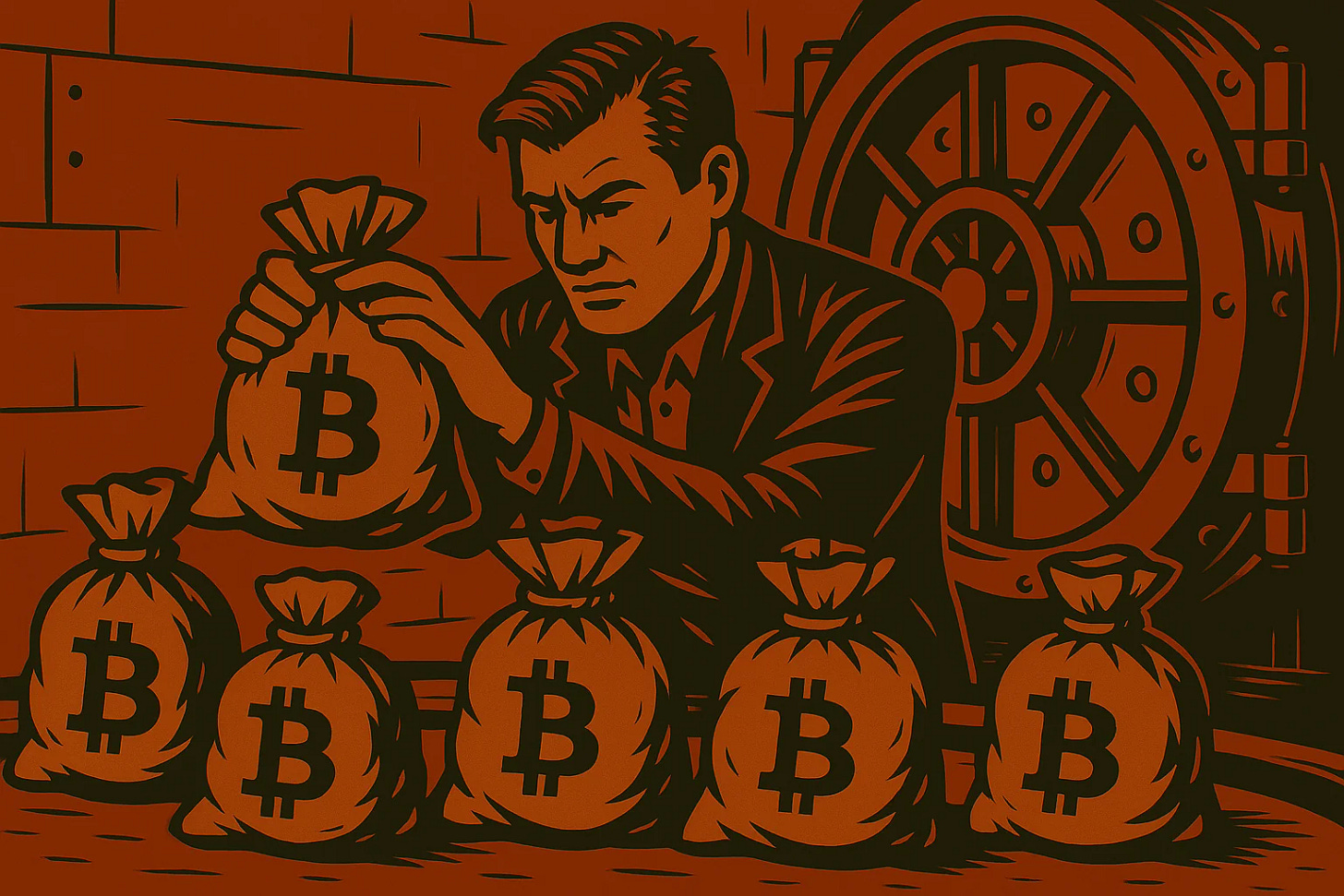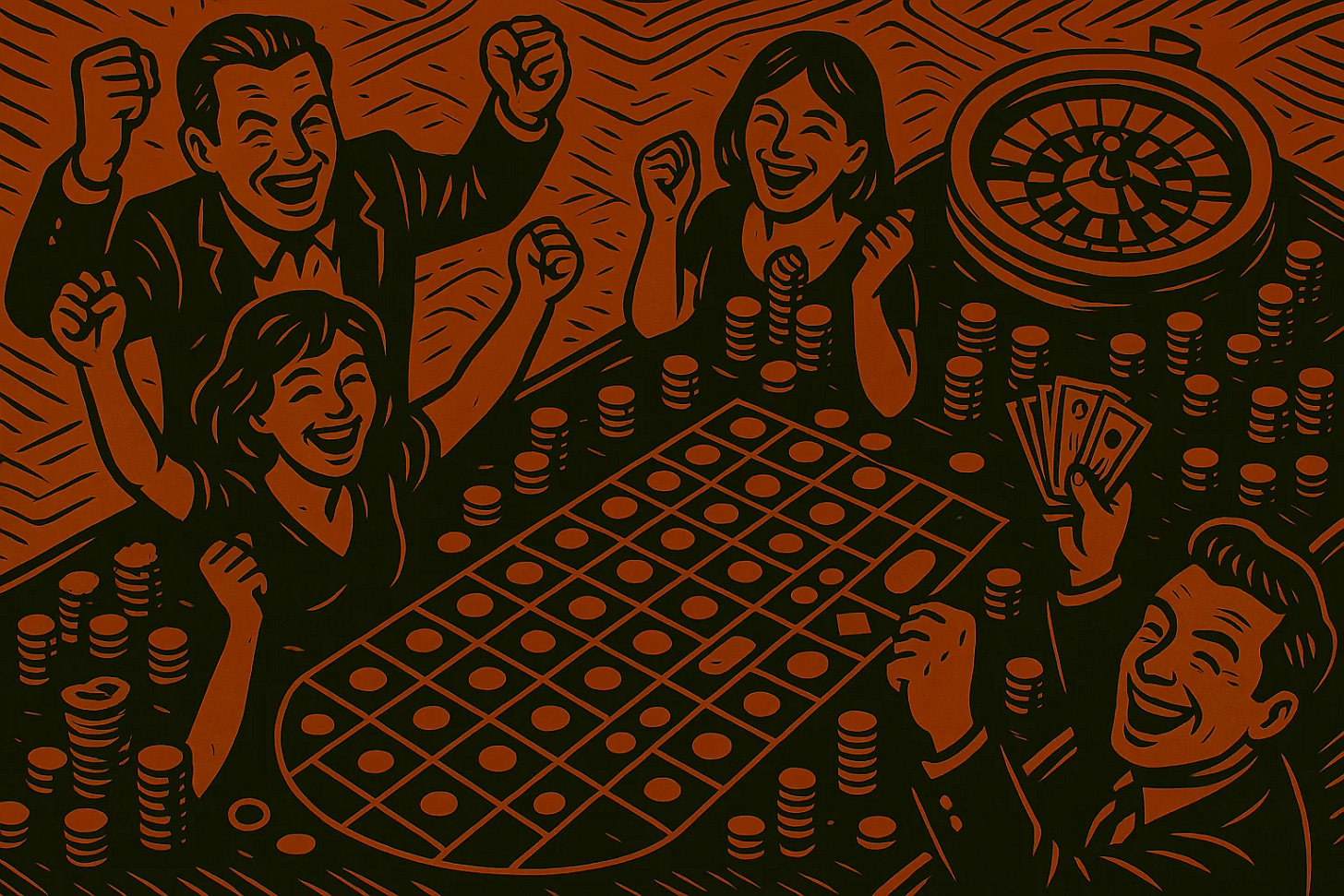Degen Endgame
How I stopped roundtripping and switched up my crypto trading strategy
1. The Hook
I’ve been here a long time. I started out with ETH NFTs. Got rugged on Solana so many times, it would make your head spin. Played with JPEGs on every chain imaginable. I’ve made a lot of money, I lost a bunch more, and made it all back, only to round-trip seven figures a handful of times.
And to be honest, I got kind of sick of it. So I knew something had to change.
This piece isn't just another thesis about Ordinals vs NFTs (though we’ll get into that too). It’s about how I finally stopped trading like a dumbass, stopped chasing every shiny thing, and built a common-sense strategy I can actually live with. One that involves stacking a lot of BTC and SOL. One that builds yield. One that gets me—and can get you—out of this game whole.
This is the Degen Endgame. Here’s how I see it playing out.
2. Why Ordinals Matter
I started with ETH NFTs. I even had Cardano NFTs. And I went in big with Solana NFTs—and I lost big too. All these NFTs on other chains, they made sense before we had jpegs on Bitcoin. But when that happened, it changed everything. Here’s how: Back in the early days, ETH NFTs were the shit… just like when VHS first came out. Then came the ordinals protocol, with 4k streaming. Ethereum is like Blockbuster. That shit is closed, but nostalgic mfers still linger. But lemme tell you why:
- True ownership. We can talk about IPFS pointers all day. What this comes down to is that the team—or whomever gains access to those pointers—can modify your NFTs unilaterally. You don’t have control, which means you don’t have true ownership. Ordinals, in contrast, are inscribed directly on individual sats, and the art you have in your wallet is IN your actual wallet. No one else has control. They are actually yours to keep, or do whatever you want with.
- Rare sats. Ordinal theory has made it possible for us to enumerate each sat. This means that we can track every single sat that’s ever existed, which culminates in interesting possibilities, chiefly historical, like who owned which sat when, and what they did with it. (e.g., like Silk Road sats or Hitman sats, which were allegedly used by Ross [founder of Silk Road] to hire hitmen.) We can also collect them based on what we find to be interesting. The appeal is obvious to anyone who’s ever collected stamps or coins, which I have. (Nerd!)
- It’s on the oldest chain. Ever heard of the Lindy Effect? It’s a theory that posits that the longer something has persisted through time, the more likely it is to continue existing. Think coffee. Wine. Think old stories that we’ve been able to preserve over centuries. Shakespeare. Homer. etc. We don’t know how long other chains will exist. Just look at last cycle. We had so many chains that are no longer relevant. This is how it will continue to play out. Many will come and go, but we can be sure of one thing: Bitcoin will remain. It is the safest and most secure chain. Yes, every chain has its tradeoffs, and for Bitcoin, it’s fees and speed. In exchange, we get security on the most decentralized chain in existence.
- Permanence. Since the art is inscribed on individual sats, your art, or whatever it is you’ve got inscribed, whether it’s photos, a game, what have you, is like a digital fossil, a record of the past, and you get to keep it for as long as you like. (Yes, even forever. You can pass it down—like a digital heirloom that could accrue value over time.)
Yes, most folks are still fading ordinals, and still buying NFTs. They’re not wrong, tho, not when it comes to making money. Yes, NFTs are technologically inferior… but does tech matter if you want to make a quick buck? In other words, do you want to be right, or do you want to make money?
For a long, long time, I practiced options blindness and had my blinders on. Truth is, other players with liquidity don’t give a shit about the tech; they care about money. This is who you’re trading against.
3. The Mistakes You See (and Avoid)
Most of you will lose money in crypto. Of course, this happens on Bitcoin too. TONS of folks get wrecked buying ordinals. They get into the wrong plays, or do something lame, and then blame ordinals. (Dumb.) Here’s where many folks go wrong:
Chasing hype without understanding what they’re buying. Bitcoin ordinals have evolved a TON since its heydays. Long gone are the days where your friends shill you cool projects, and you ape in. The marketing strategy has evolved to become almost a playbook, where projects sell via KOL shilling and wl collabs. Understand that there are many low-effort projects being promoted at any one time, and they’re ALL fighting for your sats. So ask yourself this question: Why are you here? Let’s be honest: We’re not here to lose money. If you’re here to make money AND have fun, then you need a strategy and a strong understanding of how this all works and how you can make it work for you, minus the emotions.
FUD stops you from buying in. Ignore the FUD. If the project’s making enough noise, retards will FUD. It’s easy to have an opinion, especially when you haven’t run anything. So pay attention to who’s fudding too, because it’s most likely that they’re only known for their shitty opinions, rather than anything else. And FUD leaders will attract toxic retards who parrot their opinions. Misery loves company, after all.
Not taking profit, and holding for the long haul. There are 2 big mistakes you can make:
You buy into the wrong project. (You’re a community member now.)
You buy into the right project, but you get greedy and miss your chance to profit. (You’re a community member now.)
Congrats. You played yourself. When you hear someone say that the best part of buying into a project is community, you’re listening to a retard. Do not forget your objective: You’re here to make money. The alternative? You’re losing money. No two ways about it. EVERYTHING ELSE is secondary to that. Community, having fun, and art are all secondary to that. Wouldn’t you be having much more fun if you were actually earning money, while hopping in and out of communities, sticking to communities you believe are goated based on your conviction bets, and buying jpegs that you actually like? (More on this later.)
Bitcoin infighting. This is more of an observation and a side note. As ordinal enjoyers, we’re always talking about bringing in outside liquidity, adoption, and all that good shit. Unfortunately, certain toxic retards make that really difficult. I’ve read outsiders say they were put off by how abrasive the culture and ordinal folks can be, and I can’t disagree. Some of you guys are really intolerable dumb mfers who love bringing each other down. How are we going to appeal to outsiders? Not by being toxic to each other. Do you see Nintendo talking shit to Sony or Microsoft? No. It’s dumb. Sometimes we see couples fight in public, airing their dirty laundry. What do we do? We laugh at them because they look pathetic. Kinda like we look sometimes when some of you dumb mfers attack projects in public, with no real criticism or constructive feedback, but just malicious vitriol. Leave it at home, stop being a little immature dumb fuck, and keep your mouth shut if you don’t have anything constructive to add. You’re doing the entire space a disservice, while making yourself look real stupid in the process.
4. My Criteria for High-Conviction Plays
Here are my considerations for buying and selling. I have short-term buys, and I have long-term buys. But I only hold long term if it meets these conditions:
Cultural impact, historical value. (Will it still be relevant a few years from now?) To clarify, these would be OMB and Taproot Wizards for me. I also hold Billy Restey pieces (he does interesting experiments with tech + art), Fomojis (I think they’re undervalued), Rupture (I love the art), Pizza Ninjas (Trevor is smart, and works his ass off for his project), etc. I don’t know whether all of these will be valuable, but this leads me to my next point:
Do I like it? And why am I buying it? If I like something, I will consider buying. When I look at a jpeg, I can get a pretty accurate gauge of whether something is low effort, or if there might be something to it. If something catches my attention, I dig deeper. But also: Sometimes I like something and I buy it, even if this means “losing” money, as in, I do not hold any expectations about the price going up. Admittedly, it is more fun when prices do go up, and you buy 2 to 3 pieces, and you can offload 2 of your least favorite ones to cover your initials. Then you can hold onto your favorite for free. Congrats. You’re an actual collector, and not a bag holder.
Supply and mint price. I used to ignore this somewhat, but not anymore. It helps me evaluate whether I’m buying into an asymmetric bet. That’s not to say there aren’t exceptions, but those are rare. For instance, Rupture’s pieces amount to fewer than 1,000, but that hasn’t stopped the floor price from descending. To simplify: Demand does not exceed supply.
5. How I Trade, for better or worse
So I think you should be getting an idea of my trading strategy by now. I scalp short-term mints when the hype + price action align. Right after buying, I list immediately at floor. With short-term plays, it’s best to do what a friend of mine advised long ago: “Live on the floor.”
I have long-term plays. You can find my wallet. It’s not hard. I hold a lot, unfortunately. And of course, I don’t have just one wallet. I have dozens. Eventually, I aim to consolidate most of them, but for now, I like having many. (I have no idea why lol)
But my endgoal is simple: stack BTC + SOL, then build yield with it, so that I can play with that yield, live off it, and not risk my principal at all. Recognize that jpegs, runes, shitcoins, etc., they’re all leveraged plays. And leverage means taking on more risk—and a helluva lot of it. That’s why, for most jpeg plays, it’s best to go in and out, unless you’re playing for conviction.
Just keep in mind that greed is the enemy of profit, and sometimes, some plays won’t go your way, but try not to end up a bag holder. (I still bag-hold sometimes. It’s a hard habit to beat, but I’m learning and practicing.)
6. A few hard lessons
I’ve been here for many years. I’ve roundtripped seven figures several times. I also lost 300k in a drain. I’ve lost so much money, it would make your teeth hurt. I’ve also made a lot of money, and I’m grateful for all the opportunities. It’s only in this space where you can make a bag and lose a bag, and still make it back—as long as you’re willing to continue playing and stomaching the ups and downs. But what’s changed in the past few months is my endgame strategy. I’ve decided to face up to my losses and assess where I went wrong. I no longer want to make the same mistakes. Something needed to change, and I think it took me roughly 9 months of sobriety to get to this point. In a way, it feels like starting over. Yes, I haven’t sold any of my bags. I still hold a big bag of $DOG. I still hold a couple BTC DeGods (lmao. Why?!) I still hold a bunch of stuff I shouldn’t be holding. Will I sell these? Maybe, or maybe I’m a victim of the sunk cost fallacy, and I’m holding in the MAJOR off-chance that they’ll move back up. Either way, I’m happy to keep those bags while executing my new endgoal strategy. It feels like I’m on the right path now, and if $DOG moves back up, great. I’ll be swimming in it. If it doesn’t, great. I have my principal I’m building up now. Either way, I’m winning, and that’s the position I want you to be in.
7. Some words to leave you with
The goal isn’t to catch every pump. Recognize that when someone tells you, “oh it’s ‘cause you didn’t hold and sold too early”, you’re talking to a special kind of bozo. There will always be another play. This is crypto. Opportunities pop up every fucking day.
So here’s what I’ll leave you with:
It’s much easier to know when to buy than to know when to sell. So sell when you’re in profit, and ignore that pesky emotion, the one that tells you that you sold too early. After all, there’s a good chance the price could go lower after you sell for profit, and you can always buy back in with your profit and ride it out with a free bag. The key thing is to keep adding to your principal. And of course, keep having fun, because jpegs and everything else are more fun when you’re actually making money, right?
— Valerioshi









Congrats on landing on ordinals. I totally resonate with your story and conclusions.
I build ordinals "satplications" -- that is applications that live on multiple sats with the BRC333 meta-protocol, which I have been developing for the past 18 months.
Recently, because a friend wanted to launch a collection on XRP, I developed a method for cross-chain NFTs that are backed by Bitcoin. All the metadata and images are generated on Bitcoin from a single UNAT script. So it is DMT too :)
This the generator script: https://ordinals.com/content/aa1c265e362018d2044f17dbe5fd2d7a18fd4c6aea6d3d5c12d8f5ec5e1074a4i0
Press i for info
Press h to change block or date
How to get the metadata of the 4th NFT in collection
https://ordinals.com/content/aa1c265e362018d2044f17dbe5fd2d7a18fd4c6aea6d3d5c12d8f5ec5e1074a4i0#/0/metadata/4.json
How to get the image directly of the 4th NFT in collection
https://ordinals.com/content/aa1c265e362018d2044f17dbe5fd2d7a18fd4c6aea6d3d5c12d8f5ec5e1074a4i0#/0/4
or you can also get by the DMT block
https://ordinals.com/content/aa1c265e362018d2044f17dbe5fd2d7a18fd4c6aea6d3d5c12d8f5ec5e1074a4i0#/block/479811
The architecture is such that the first request takes a moment to load, but subsequent requests are lightning fast..